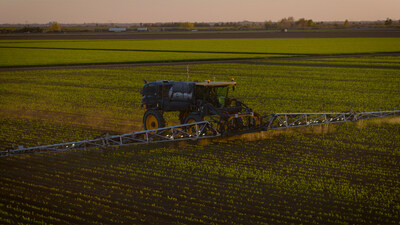Microsoft’s $100 Billion AI Investment: Tripling GPUs by 2024, but at what cost?
Microsoft has set an ambitious target of acquiring 1.8 million AI chips by the end of 2024, as per a review of a company document by Business Insider. The company’s…
Transforming Dairy Farming: A Closer Look at DeLaval’s VMS Batch Milking Robot
In 1983, DeLaval patented the VMS batch milking system robot, a revolutionary invention that helped pave the way for modern dairy farming practices. The skepticism surrounding automated milking was high…
TSMC Forecasts 30% Revenue Growth in Upcoming Quarter Driven by Artificial Intelligence Demand
Taiwan Semiconductor Manufacturing Co. (TSMC) is forecasting revenue growth of as much as 30% in the upcoming quarter, driven by a surge in artificial intelligence (AI) development that is creating…
Greeneye Technologies Secures $20 Million in Funding to Revolutionize Precision Spraying for Sustainable Agriculture
Greeneye Technologies, a Tel Aviv-based company specializing in AI-enabled precision spraying technology, has secured $20 million in funding. The funding round was led by Deep Insight with participation from Syngenta…
From Runway to Kitchen: Orry’s Fascinating Fusion of Style and Cooking Skills!
Orry, also known as Orhan Awatramani, is a well-known face at celebrity gatherings, with his unique sense of style and entertaining interviews. Despite the curiosity surrounding Orry, little is known…
Vandal Science Days: A Two-Day Event Blending Science and Music in Idaho
The University of Idaho’s College of Science presents Vandal Science Days, a two-day event that offers attendees the opportunity to participate in a variety of science-based activities. Taking place on…
Decoding the Genetic History of Arabica: How the World’s Favorite Coffee Bean Originated in Ethiopia and Shaped Our Lives Today
A recent genetic study published in the journal Nature Genetics has shed light on the fascinating origins of coffee Arabica, the world’s most popular coffee bean. The study utilized DNA…
NASA’s Ingenuity Mars Helicopter Completes Final Flight and Shifts to Data-Gathering Mission
NASA’s Ingenuity Mars helicopter has completed its final flight and will now serve as a stationary data-gathering unit on the red planet’s surface, the space agency announced on Tuesday. The…
Maine School of Science and Mathematics Math Team Wins First Place at 45th Annual Maine State Math Meet
The Maine School of Science and Mathematics Math Team recently clinched first place at the 45th annual Maine State Math Meet, cementing their reputation as a formidable force in the…
Unidentified Women and Dogs on the Run: Hamminkeln Police Launch Search
In the idyllic town of Hamminkeln, North Rhine-Westphalia, the police are on a mission to locate two unidentified women and their three dogs. This comes after one of the dogs…


